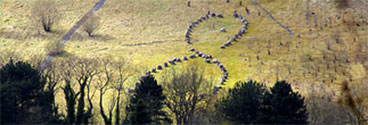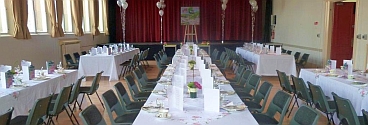Why was the clock tower covered in scaffolding?
At the beginning of March a large piece of masonry fell from the clock tower to the ground in front of the library doors. To ensure public safety, the area was cordoned off, while scaffolders and a stone mason were found and until the required work could be completed.
Works commenced at the start of April and local stone mason Mark Heaton applied mesh to areas where stonework protrudes around the Clock and nearby Main Hall window. This is a non-invasive solution to reduce the risk of falling stone. Some mesh was also installed on flat surfaces where there is larger unstable stone. 


(L-R) Showing where the piece of masonry fell from/ Further overhanging stonework is covered for protection/ The Town Clerk inspecting the stonework on the south side.
The scaffolding was a large job, so to capitalise upon the access it gave, other jobs were carried out while it was in situ. Sealant was applied to crumbling stonework around the clock tower and stonework was repointed. Pigeon nesting is a long-term problem on the building, with out-of-reach gutters often being blocked, causing leaks and water damage inside the town hall. While the scaffolding was up nearby gutters and gulleys were cleared of debris, prior to nesting commencing and it is hoped this will deter nesting this year at least.



Finally while the scaffolding was in situ, our local horological expert Les Kirk, who has maintained the clock for 45 years, oiled the clock hands. All in all, an unexpected but welcome refurbishment of the clock tower which is so significant within our townscape.




